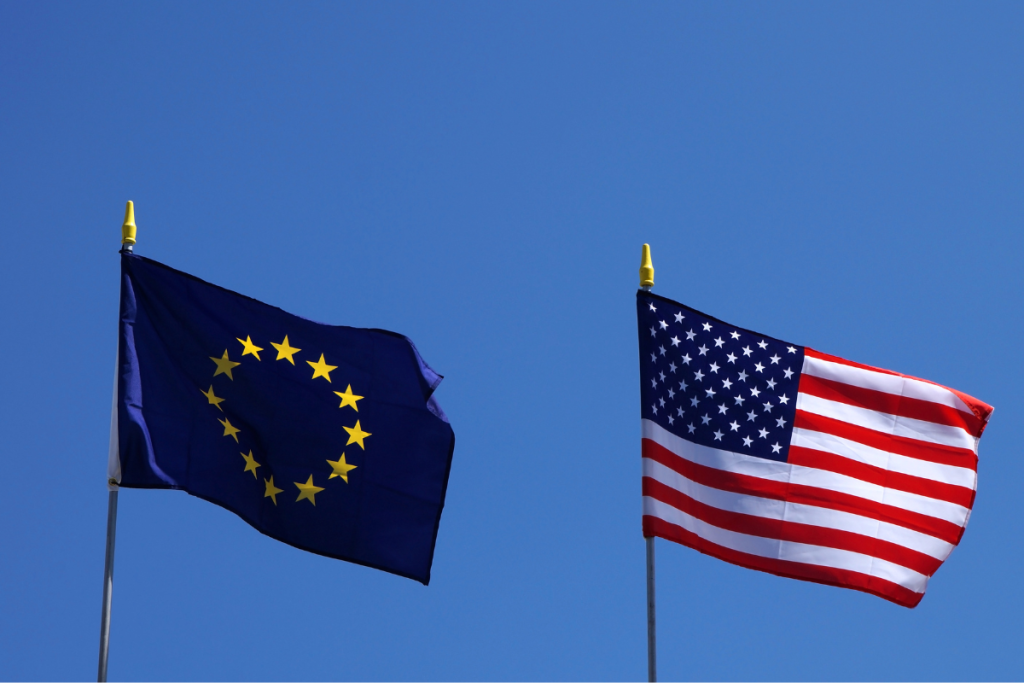President Trump has delayed the implementation of 50% tariff on European imports to July 9, citing a lack of progress in trade talks and “unfair barriers” imposed by the EU. The measure, originally scheduled to take effect June 1, was delayed after a phone call with European Commission President Ursula von der Leyen. As negotiations falter, supply chain leaders are preparing for broad impacts on pricing, supplier relationships, and trade flow resilience.
Tariff Risk Rises as Negotiations Stall
The proposed tariff follows a series of reciprocal trade actions announced in April, when the U.S. imposed a 20% duty on EU imports. That rate was temporarily reduced to 10% under a 90-day suspension, which now runs through early July.
Trump, dissatisfied with the pace of negotiations, pointed to structural imbalances in the transatlantic relationship, including value-added taxes and regulatory restrictions on U.S. companies.
The U.S. trade deficit with the EU reached $236 billion in 2024, according to the U.S. International Trade Commission. If enacted, the 50% tariff would apply to roughly $321 billion in imports annually, spanning key industrial and consumer sectors. Bloomberg Economics estimates the tariff could trim U.S. GDP by 0.6% and increase consumer prices by more than 0.3%.
The EU has prepared countermeasures worth $107 billion, covering a wide array of American goods, but has delayed enforcement until July 14 to keep the diplomatic channel open. Technical-level discussions between EU Trade Commissioner Maroš Šefčovič and U.S. Trade Representative Jamieson Greer are expected to continue in the coming weeks, but officials say progress remains limited—especially on non-tariff barriers.
Supply Chains Brace for Impact
The tariff threat is prompting U.S. companies to reassess sourcing strategies, accelerate shipments, and review exposure to European suppliers. Industries with tight margins and deep ties to EU manufacturing, including automotive, aerospace, and consumer electronics, face the highest risk.
Procurement teams are running cost scenarios and preparing for potential passthrough pricing. Compliance officers are reviewing tariff classifications and preparing documentation for expedited processing if duties are implemented. Some companies are already shifting production to non-EU markets, including North Africa and Southeast Asia.
Retailers importing high-value European goods, such as wine, apparel, and personal care items, are also facing uncertainty around landed costs and potential retaliation. The threat of reciprocal duties by the EU could disrupt outbound U.S. exports, particularly in agriculture and industrial equipment.
Trump’s broader message is that tariffs are a tool to force investment back into U.S. manufacturing, particularly in advanced sectors. “We’re not looking to make sneakers and T-shirts,” he said Sunday. “We want to make military equipment, chips, computers, and AI systems.”
Trade Volatility Is Now a Core Operating Risk
The short delay to July 9 offers some tactical breathing room, but it doesn’t change the underlying trajectory. Tariff-based policy, whether as leverage or outcome, has re-emerged as a fixture in U.S. trade strategy. For supply chain leaders, the priority now is not just contingency planning, but institutionalizing trade responsiveness into core operations.
That means reassessing supplier dependencies, tightening coordination between procurement and trade compliance teams, and updating pricing models to reflect volatility across both tariff and non-tariff fronts. The assumption of trade stability is no longer tenable. Resilience, in governance, in sourcing, and in execution, is now the baseline.





